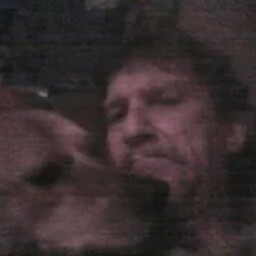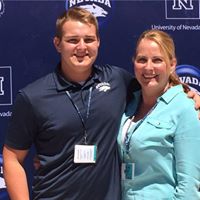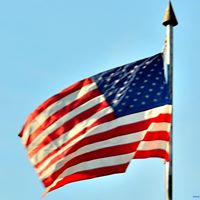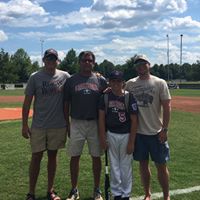Michael E Samples
age ~42
from Redmond, WA
- Also known as:
-
- Mike E Samples
- Phone and address:
- 16117 NE 90Th Way, Redmond, WA 98052
Michael Samples Phones & Addresses
- 16117 NE 90Th Way, Redmond, WA 98052
- Ann Arbor, MI
- 4604 Laskey Rd, Toledo, OH 43623 • 4198433437
- Sylvania Township, OH
Education
-
Degree:High school graduate or higher
Us Patents
-
Computing Platform For Multiple Intelligent Transportation Systems In An Automotive Vehicle
view source -
US Patent:8126605, Feb 28, 2012
-
Filed:Dec 5, 2007
-
Appl. No.:11/950537
-
Inventors:Lorenzo Caminiti - Ann Arbor MI, US
Michael E. Samples - Toledo OH, US
Michael R. James - Dearborn MI, US
Kenneth P. Laberteaux - Ann Arbor MI, US
Derek S. Caveney - Ann Arbor MI, US
Jeff B. Rogers - Ann Arbor MI, US -
Assignee:Toyota Motor Engineering & Manufacturing North America, Inc. - Erlanger KY
-
International Classification:G01M 17/00
G06F 7/00
G06F 19/00 -
US Classification:701 29, 701 33, 340 31, 340 343, 340 36
-
Abstract:A computing platform for multiple intelligent transportation systems in an automotive vehicle having a plurality of sensors which generate output signals representative of various vehicle operating parameters. The platform includes a vehicle data center which receives input signals from the vehicle sensors and the vehicle data center is configured to transform these input signals into output signals having a predetermined format for each of the vehicle operating parameters. A central processing unit receives the output signal from the vehicle data and is programmed to process the vehicle data center output signals for each of the intelligent transportation systems and generate the appropriate output signals as a result of such processing.
-
Combining Driver And Environment Sensing For Vehicular Safety Systems
view source -
US Patent:8384534, Feb 26, 2013
-
Filed:Jan 14, 2010
-
Appl. No.:12/687599
-
Inventors:Michael Robert James - Northville MI, US
Michael Edward Samples - Ann Arbor MI, US
Steven F. Kalik - Arlington MA, US -
Assignee:Toyota Motor Engineering & Manufacturing North America, Inc. - Erlanger KY
-
International Classification:B60Q 1/00
-
US Classification:340439, 340903, 340435, 340576, 340575, 382103, 342107
-
Abstract:An apparatus for assisting safe operation of a vehicle includes an environment sensor system detecting hazards within the vehicle environment, a driver monitor providing driver awareness data (such as a gaze track), and an attention-evaluation module identifying hazards as sufficiently or insufficiently sensed by the driver by comparing the hazard data and the gaze track. An alert signal relating to the unperceived hazards can be provided.
-
Method For Safely Parking Vehicle Near Obstacles
view source -
US Patent:8571722, Oct 29, 2013
-
Filed:Oct 22, 2010
-
Appl. No.:12/910581
-
Inventors:Michael Edward Samples - Ann Arbor MI, US
Michael Robert James - Northville MI, US -
Assignee:Toyota Motor Engineering & Manufacturing North America, Inc. - Erlanger KY
-
International Classification:G05D 1/00
-
US Classification:701 1, 701 25, 701 23
-
Abstract:Method, storage medium and system of optimizing a destination for a vehicle by obtaining a map corresponding to a desired destination of the vehicle and identifying objectives of the map based on multiple parameters including collision avoidance, driver time, legal constraints and social consensus. A cost function is constructed to determine an optimal destination based on a proximity to the desired destination and the identified objectives, and an optimal destination is identified by minimizing a value of the cost function.
-
Real-Time 3D Point Cloud Obstacle Discriminator Apparatus And Associated Methodology For Training A Classifier Via Bootstrapping
view source -
US Patent:8605998, Dec 10, 2013
-
Filed:May 6, 2011
-
Appl. No.:13/102801
-
Inventors:Michael Edward Samples - Ann Arbor MI, US
Michael Robert James - Northville MI, US -
Assignee:Toyota Motor Engineering & Manufacturing North America, Inc. - Erlanger KY
-
International Classification:G06K 9/62
G06K 9/00 -
US Classification:382159, 382104
-
Abstract:Training a strong classifier by classifying point cloud data with a first classifier, inferring a first terrain map from the classified point cloud data, reclassifying the point cloud data with the first classifier based on the first terrain map, and training a second classifier based on the point cloud data reclassified with the first classifier based on the terrain map. The point cloud data is then classified with the second classifier, and the procedure followed with the first classifier is iteratively repeated until a strong classifier is determined. A strong classifier is determined when a probability of a terrain map matching a given terrain for the strong classifier is approximately equal to a probability of a terrain map matching the given terrain for a prior trained classifier.
-
Relevancy Check For Vehicle Safety Messages Using A Path History
view source -
US Patent:20080103697, May 1, 2008
-
Filed:Oct 30, 2006
-
Appl. No.:11/554084
-
Inventors:Lorenzo Caminiti - Ann Arbor MI, US
Derek S. Caveney - Ann Arbor MI, US
Kenneth P. Laberteaux - Ann Arbor MI, US
Michael E. Samples - Toledo OH, US -
Assignee:Toyota Engineering & Manufacturing North America, Inc. - Erlanger KY
-
International Classification:G08G 1/16
-
US Classification:701301, 701300
-
Abstract:There is disclosed a method for avoiding a collision in a vehicle including the steps of: providing a transmitting vehicle, providing a receiving vehicle, creating data information in the transmitting vehicle, sending the data information to the receiving vehicle, and determining the relevancy of the data information to the receiving vehicle using a current position and heading of the receiving vehicle.
-
Method And System For Tracking Objects
view source -
US Patent:20130031045, Jan 31, 2013
-
Filed:Jul 25, 2011
-
Appl. No.:13/190193
-
Inventors:Michael Robert James - Northville MI, US
Michael Edward Samples - Ann Arbor MI, US -
Assignee:Toyota Motor Engineering & Manufacturing North America, Inc. - Erlanger KY
-
International Classification:G06N 5/04
-
US Classification:706 52
-
Abstract:An object tracking system and method operable to minimize processing time for tracking objects is provided. The system includes a pair of filters operable to make associations between dynamic objects newly detected and previously detected. One of the pair of filters makes an association when the predicted location of the previously detected objects is within a predetermined distance of the newly detected object. The other of the pair of filters makes an association based upon the probability that a newly detected dynamic object is a previously detected dynamic object. The remaining unassociated dynamic objects are then localized so as to form discrete matrices for optimization filters.
-
Tracking On-Road Vehicles With Sensors Of Different Modalities
view source -
US Patent:20140032012, Jan 30, 2014
-
Filed:Jul 24, 2012
-
Appl. No.:13/556802
-
Inventors:Avdhut S. JOSHI - Ann Arbor MI, US
Michael R. James - Northville MI, US
Michael E. Samples - Ann Arbor MI, US -
Assignee:TOYOTA MOTOR ENG. & MFTG. NORTH AMERICA - Erlanger KY
-
International Classification:G06F 17/00
-
US Classification:701 1, 702150
-
Abstract:A vehicle system includes a first sensor and a second sensor, each having, respectively, different first and second modalities. A controller includes a processor configured to: receive a first sensor input from the first sensor and a second sensor input from the second sensor; detect, synchronously, first and second observations from, respectively, the first and second sensor inputs; project the detected first and second observations onto a graph network; associate the first and second observations with a target on the graph network, the target having a trajectory on the graph network; select either the first or the second observation as a best observation based on characteristics of the first and second sensors; and estimate a current position of the target by performing a prediction based on the best observation and a current timestamp.
-
Calibrating Sensor Alignment With Applied Bending Moment
view source -
US Patent:20220385881, Dec 1, 2022
-
Filed:Jun 1, 2021
-
Appl. No.:17/336119
-
Inventors:- Redmond WA, US
Navid POULAD - San Jose CA, US
Dapeng LIU - Redmond WA, US
Trevor Grant BOSWELL - Madera CA, US
Roy Joseph RICCOMINI - Saratoga CA, US
Michael Edward SAMPLES - Redmond WA, US -
Assignee:Microsoft Technology Licensing, LLC - Redmond WA
-
International Classification:H04N 13/246
H04N 13/366
G06F 3/01
H04N 13/239 -
Abstract:Examples are disclosed that relate to calibration data related to a determined alignment of sensors on a wearable display device. One example provides a wearable display device comprising a frame, a first sensor and a second sensor, one or more displays, a logic system, and a storage system. The storage system comprises calibration data related to a determined alignment of the sensors with the frame in a bent configuration and instructions executable by the logic system. The instructions are executable to obtain a first sensor data and a second sensor data respectfully from the first and second sensors, determine a distance from the wearable display device to a feature based at least upon the first and second sensor data using the calibration data, obtain a stereo image to display based upon the distance from the wearable display device to the feature, and output the stereo image via the displays.
Name / Title
Company / Classification
Phones & Addresses
SIMPLE MECHANICS MASSAGE THERAPY, INC
Resumes

Microsoft Hololens
view sourceLocation:
16117 northeast 90Th Way, Redmond, WA 98052
Industry:
Computer Software
Work:
Toyota Technical Center - Ann Arbor, MI since May 2005
AI & Robotics Senior Engineer
Altarum May 2003 - Aug 2004
AI Research Intern
University of Michigan May 2002 - Sep 2002
Undergraduate Research
AI & Robotics Senior Engineer
Altarum May 2003 - Aug 2004
AI Research Intern
University of Michigan May 2002 - Sep 2002
Undergraduate Research
Education:
University of Michigan 2001 - 2006
B.S., Computer Science & Mathematics
B.S., Computer Science & Mathematics
Skills:
C++
Machine Learning
Computer Vision
Artificial Intelligence
Algorithms
Data Mining
Python
Robotics
Simulations
Computer Science
Camera Calibration
Slam
Probabilistic Models
R&D
Navigation
Optimization
Numerical Methods
Sensors
Autonomous Vehicles
Mountain Biking
Path Planning
R
Distributed Systems
Mapping
Augmented Reality
Virtual Reality
Machine Learning
Computer Vision
Artificial Intelligence
Algorithms
Data Mining
Python
Robotics
Simulations
Computer Science
Camera Calibration
Slam
Probabilistic Models
R&D
Navigation
Optimization
Numerical Methods
Sensors
Autonomous Vehicles
Mountain Biking
Path Planning
R
Distributed Systems
Mapping
Augmented Reality
Virtual Reality
Interests:
Kayaking
Investing
Rock Climbing
Snowboarding
Soccer
Running
Coding
Investing
Rock Climbing
Snowboarding
Soccer
Running
Coding

Michael Samples
view source
Michael Samples
view source
Michael Samples
view sourceLocation:
United States
Googleplus

Michael Samples

Michael Samples
Tagline:
How does I work this thang?

Michael Samples

Michael Samples

Michael Samples
Youtube
Myspace
Plaxo

michael samples
view sourceAI & Robotics researcher. Primarily interested in mobile robotics applications of AI algorithms.

Michael Samples
view sourceSamples Properties
Flickr
Classmates

Michael Samples
view sourceSchools:
Du Quoin High School Du Quoin IL 1975-1979
Community:
Diana Bowers, Richard Mcquinn, Dawn Hess, Glen Moore

Michael Samples
view sourceSchools:
Community High School Nevada TX 1992-1996
Community:
Kerry Porter, Jessica Wright, Robert Dawson, Alice Jones

Michael Samples
view sourceSchools:
Liberty High School Glen Daniel WV 1982-1986
Community:
Gail Farley, Bethann Godfrey

Michael Samples
view sourceSchools:
Saint Mark Lutheran School Cleveland OH 1964-1972, Lutheran High School West Rocky River OH 1973-1976
Community:
William Varga, Gail Skinner

Michael Samples
view sourceSchools:
John Carroll Catholic High Schoool Birmingham AL 1971-1975
Community:
Kathy Carden, Dennis Wiemar, Mark Calkins

Michael Samples
view sourceSchools:
Aurora High School Aurora NE 1980-1984
Community:
Mark Volf, Robin Anderson, Greg Cranfill, Clint Spiegel, Lori Wert, Jeff Nelson, Linda Luthy, Dana Duncan, Bruce Jensen

Liberty High School, Glen...
view sourceGraduates:
Michael Samples (1982-1986),
Joseph Gray (2002-2006),
Jessica Harrison (2003-2007),
Harry Collins (1995-1999),
Adolph Chacon (1991-1995)
Joseph Gray (2002-2006),
Jessica Harrison (2003-2007),
Harry Collins (1995-1999),
Adolph Chacon (1991-1995)

Carroll High School, Birm...
view sourceGraduates:
Kevin Roberts (1981-1985),
Jo Ann Deonna (1954-1958),
Michael Samples (1971-1975),
Thomas Ritchey (1994-1998)
Jo Ann Deonna (1954-1958),
Michael Samples (1971-1975),
Thomas Ritchey (1994-1998)

Michael Samples
view source
Michael Samples
view source
Michael Samples
view source
Michael A Samples
view source
Michael R. Samples
view source
Michael Joseph Samples
view source
Michael Samples
view source
Michael Samples
view sourceGet Report for Michael E Samples from Redmond, WA, age ~42










